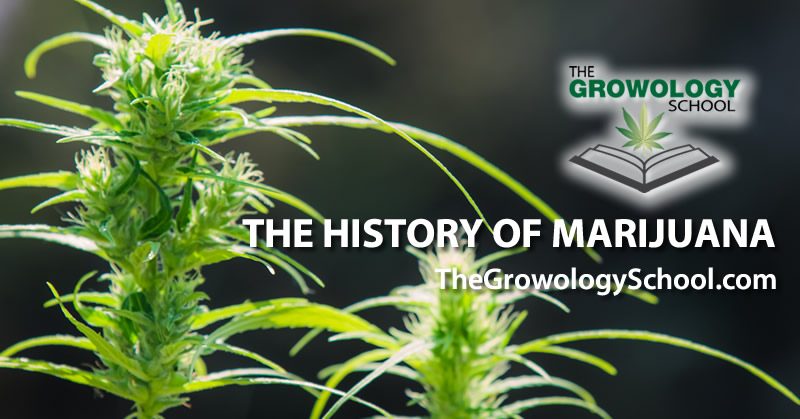The History of Marijuana
THE HISTORY OF MARIJUANA
For many years, marijuana has existed, and it has been used for various reasons such as medicinal and for attaining a state of euphoria. The first time reference was made to marijuana was in the year 2700 B.C. in a Chinese medical manual. According to Chinese legend, marijuana was an effective treatment method for malaria, rheumatism, gout and quite surprisingly, Chinese Emperor Shen Nung, the father of Chinese Medicine recorded absent-mindedness as one of the things that marijuana was used for treating.
Over time, the use of marijuana spread to Korea, then, India and some parts of Eastern Africa. In India, Marijuana was so much extolled that it was tagged as a herb that could “release us from anxiety” in a hymn written by Sanskrit Vedic. Marijuana was a common prescription for pain relief, but while ancient doctors prescribed it, they also advised against using it too much so that the user does not start to “see devils.”
Around 1500 B.C., an Egyptian papyrus described cannabis as an effective treatment for inflammation. Between 800 A.D. and 1000 A.D., the word “hashish” started showing up in the Arab world. Around this time too, many people started knowing about the intoxicating effects of the plant. Muslim resorted to taking marijuana because the consumption of alcohol is frowned upon in the Koran, but nothing about marijuana was mentioned. In India, the Hindus used marijuana in a mildly intoxicating drink known as bhang and claimed that the drink could cure ailments like dysentery, indigestion, and sunstroke.
THE HISTORY OF MARIJUANA IN AMERICA
Cannabis was introduced to the New World in the 1500s by the Spanish. They planned to grow the crop for hemp which they would use as strong fibers on fabric, bags and for the rigging of ships. Hemp ropes were also quite popular in Britain and Scandinavia because of its durability despite the environment being salty and wet. The rigging for the U.S.S. Constitution required over 120,000 pounds of hemp ropes which were made from cannabis plant fibers.
In the mid-1500s, African slaves took cannabis to Brazil. They worked on the farms and were allowed to grow their own marijuana for smoking.
By the late 1800s, sailing ships were replaced by steamships and the need for hemp reduced. Hemp was replaced with cotton and cotton became the major cash crop in south U.S.A. During this time, hemp was not being grown because it could intoxicate; the intoxicant level was very low. By 1910, when people fled the revolution in Mexico to America, they took some cannabis with them, and things started to change.
Many patent medicines contained cannabis as an ingredient, but cannabis was still not as widely used in medicines as cocaine and opium were. After 1910, American and European legislators started making moves to ban the use of drugs. It began with the Opium Convention in 1912 and 1914; they came up with the Harrison Act where the use of cannabis and other drugs were declared as crimes for the first time in history. By 1925, thirteen countries including the United States had restricted or banned the use of cannabis, but this law did not take effect fully until 1938.
Marijuana had started to take dominance in the later 1920s, and some historians claim that the reason people got more interested in it was because of Prohibition. Entertainers and musicians were the only ones allowed to use it recreationally. It was during this period that “Teefer songs” became popular in the jazz sphere and marijuana clubs started springing up across the major cities, and they were called tea pads. These establishments thrived because at the time, marijuana was not illegal and the people who patronized the clubs did not cause any social unrest or disturbances.
Between 1850 and 1941, marijuana received a free reign from the authorities and was listed in the United States Pharmacopoeia. It was also a prescription medicine for different ailments such as rheumatism and nausea. It was also used to relieve labor pains. Between the 1850s and the 1930s, there was increased use of marijuana as an intoxicant. In the 2930s, the United States Federal Bureau of Narcotics conducted a campaign which was aimed at portraying and establishing that marijuana was an addictive substance powerful enough to make the users violent. Two decades later, it has become the in-thing for the Beat Generation. College students and “hippies” began using it as a way of acting tough and rebelling against the authorities.
At some point marijuana was classified into the same category as heroin as a Schedule I drug by the Controlled Substances Act of 1970. What this means is that marijuana has a high potential to get abused and should not be used as a medical treatment. During this time Colombia became the leading supplier of marijuana.
Because marijuana was banned during the Reagan and Bush administrations in the United States, stricter laws were passed for people who were caught in possession of marijuana. They were given mandatory sentences, and law enforcement officers were more vigilant and on the lookout for people carrying marijuana around the southern borders. With the war of drugs at an all-time high, there was less reliance on importing marijuana; people started cultivating their own marijuana especially in California and Hawaii. But still, heavy importation or high-potency marijuana continued from Colombia to the United States.
In 1982, the Drug Enforcement Administration shifted its focus on marijuana farms in the United States. During this time, domestically grown marijuana was holding sway over marijuana users, and this doubled between 1979 and 1985. From the statistics released by “Monitoring The Future” from the survey it carried out on drug use by teenagers, the decline in the use of marijuana for more than ten years changed in 1992. There was an increased level of use between 1992 and 1997, and till date, we have seen the level of use increase and decrease but not for once has it been as low as it was in 1991.

